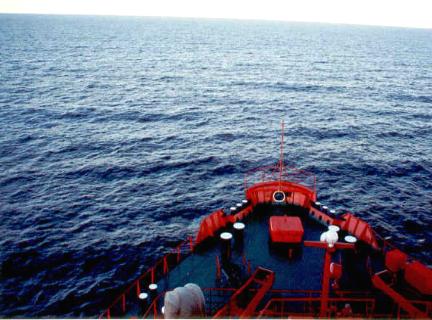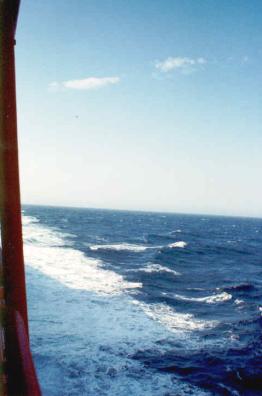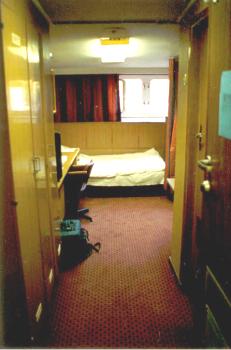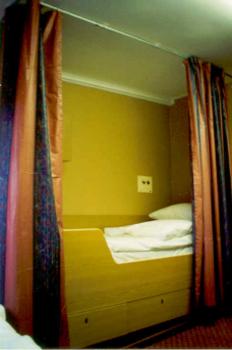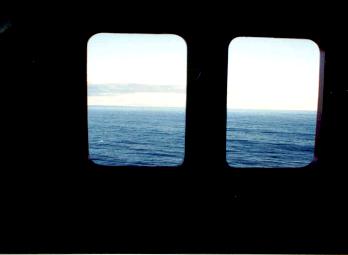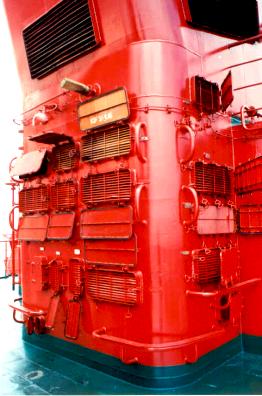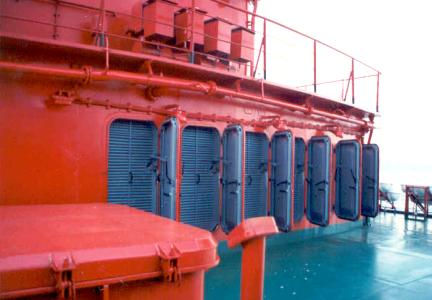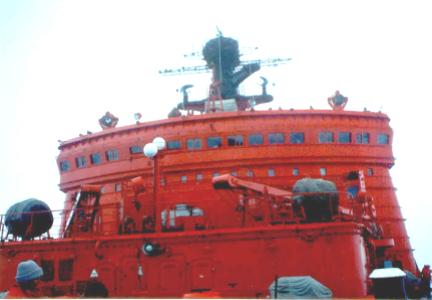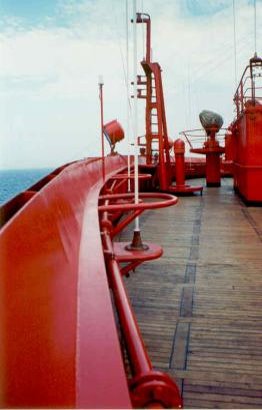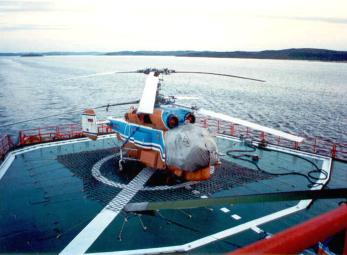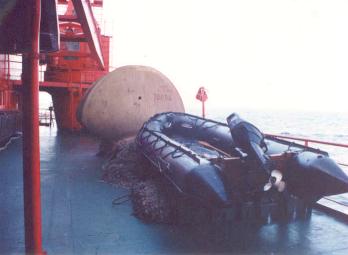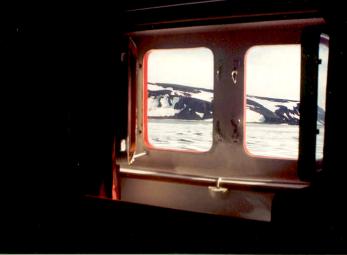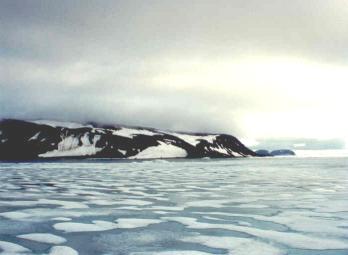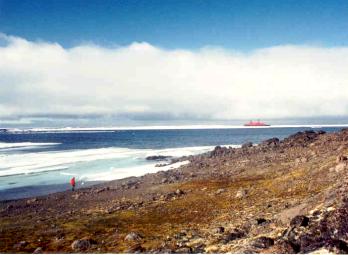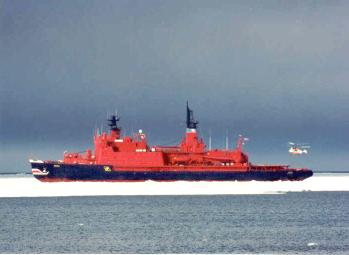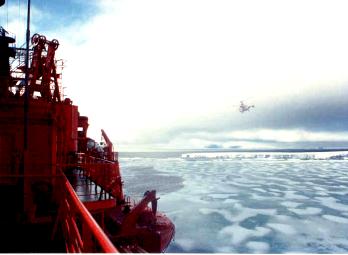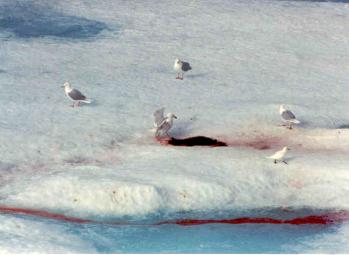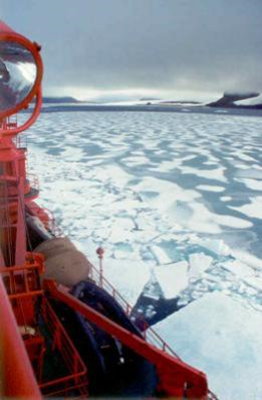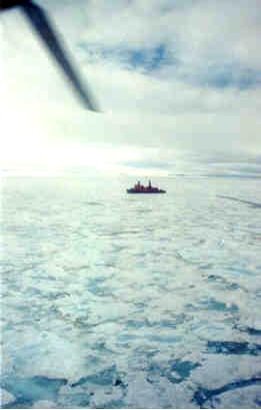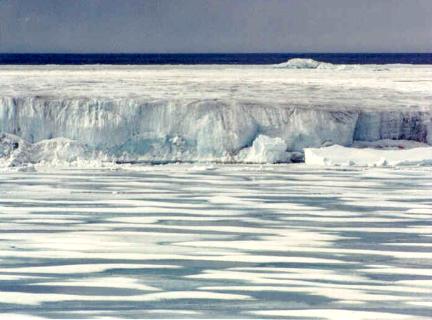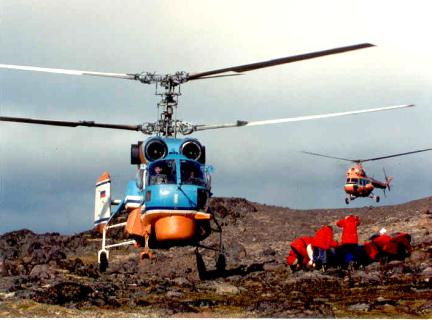On the Yamal there
were 140 officers and crew. Every single sailor had his or her own cabin,
with a full bathroom equipped with shower, sink and toilet, a bunk
that could be curtained off, a desk with drawers and cabinets, a convertible daybed, a phone for talking
to other people on the ship, a large closet, two good-sized portholes, and a radio and television that broadcast
music and movies on a closed circuit. On our first evening aboard, they somewhat whimsically screened The Hunt for Red October! The officers all doubled up, thereby freeing up enough cabins for the
passengers. The accomodations were tremendous, especially when you consider that this is a working
vessel and not a cruise liner. We did have to keep our portholes open during the whole voyage because the cabins
were kept so warm. Russians like warmth, and there is no shortage of energy on a nuclear ship. The problem is not getting heat, it's getting rid of it.
